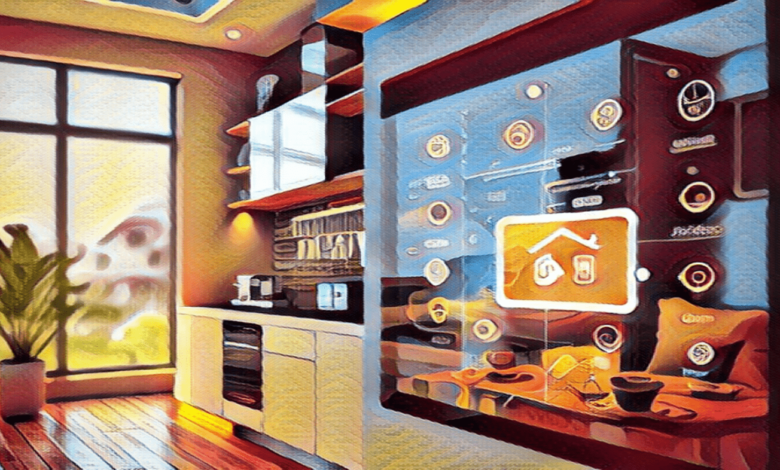Navigating the Digital Home: WiFi Essentials and Best Practices

Navigating the Digital Home: WiFi Essentials and Best Practices – In today’s digital age, where smart devices are an integral part of our lives, having a robust WiFi network is essential. From streaming movies and music to home automation and remote work, a reliable WiFi connection is the backbone of a modern household. In this article, we’ll explore the essentials of WiFi setup and best practices to ensure seamless connectivity in your digital home.
Introduction to Digital Homes
The concept of a digital home encompasses the integration of various smart devices and technologies to enhance comfort, convenience, and efficiency. From smart TVs and thermostats to security cameras and voice assistants, these devices rely on a stable internet connection to function effectively.
Importance of WiFi in Digital Homes
Benefits of WiFi Connectivity
WiFi enables seamless connectivity among various smart devices, allowing them to communicate and interact with each other. It eliminates the need for cumbersome wired connections and provides flexibility in device placement.
Challenges in Maintaining WiFi Networks
Despite its advantages, maintaining a WiFi network can be challenging. Factors such as signal interference, network congestion, and outdated equipment can affect performance and reliability.
Understanding WiFi Essentials
Components of a WiFi Network
A typical WiFi network consists of a router, which serves as the central hub, and wireless devices such as laptops, smartphones, and smart home gadgets. The router connects to the internet and broadcasts the WiFi signal to enable wireless connectivity.
Types of WiFi Routers
There are several types of WiFi routers available, including single-band, dual-band, and tri-band routers. Each type offers different speeds and coverage areas, catering to the diverse needs of users.
Best Practices for WiFi Setup
Placement of WiFi Router
The placement of the WiFi router plays a crucial role in optimizing signal strength and coverage. Ideally, it should be placed in a central location away from obstructions such as walls and electronic appliances.
Securing WiFi Networks
Securing your WiFi network is paramount to prevent unauthorized access and protect sensitive information. Enable encryption protocols such as WPA2 or WPA3 and use strong, unique passwords for network authentication.
Regular Maintenance and Updates
Regular maintenance and firmware updates are essential to keep your WiFi network secure and operating smoothly. Check for firmware updates regularly and perform periodic maintenance tasks such as clearing cache and optimizing settings.
Optimizing WiFi Performance
Dealing with Dead Zones
Dead zones are areas in your home where WiFi signal strength is weak or nonexistent. To address this issue, consider using WiFi extenders or mesh networking systems to extend coverage to hard-to-reach areas.
Enhancing Speed and Range
To enhance WiFi speed and range, ensure that your router is capable of supporting the latest WiFi standards such as WiFi 6. Additionally, optimize router settings such as channel selection and bandwidth allocation for optimal performance.
Managing Bandwidth Usage
Bandwidth management is crucial, especially in households with multiple connected devices. Prioritize bandwidth-intensive activities such as streaming and gaming and consider implementing Quality of Service (QoS) settings to ensure a smooth experience for all users.
Troubleshooting Common WiFi Issues
Slow Connection
A slow WiFi connection can be caused by various factors, including signal interference, outdated equipment, and network congestion. Troubleshoot the issue by checking for interference sources, upgrading outdated hardware, and optimizing router settings.
Signal Interference
Signal interference from neighboring WiFi networks, electronic devices, and physical obstacles can degrade WiFi performance. Minimize interference by selecting the least congested WiFi channels, relocating electronic devices, and using shielding materials if necessary.
Network Congestion
Network congestion occurs when too many devices compete for limited bandwidth, resulting in slower speeds and dropped connections. Mitigate congestion by limiting the number of connected devices, optimizing router settings, and scheduling bandwidth-heavy tasks during off-peak hours.
Future Trends in Home WiFi
Mesh Networking
Mesh networking is gaining popularity as a solution to extend WiFi coverage and eliminate dead zones in large homes. It uses multiple interconnected nodes to create a seamless network that adapts to changing conditions and offers consistent performance throughout the home.
WiFi 6 and Beyond
WiFi 6, the latest generation of WiFi technology, promises faster speeds, lower latency, and better performance in crowded environments. As more devices become WiFi 6 compatible, homeowners can expect significant improvements in their WiFi experience.
Conclusion
In conclusion, navigating the digital home requires a solid understanding of WiFi essentials and best practices. By following the tips outlined in this article, you can ensure optimal WiFi performance and enjoy seamless connectivity across all your smart devices. Stay informed about the latest advancements in home networking technology to future-proof your WiFi setup and enhance your digital lifestyle.
FAQs (Frequently Asked Questions)
- What is the importance of WiFi in a digital home?
- WiFi enables seamless connectivity among various smart devices, facilitating communication and interaction.
- How can I improve WiFi performance in my home?
- You can improve WiFi performance by optimizing router placement, securing your network, and managing bandwidth usage.
- What are common causes of WiFi issues?
- Common causes of WiFi issues include signal interference, network congestion, and outdated equipment.
- What is mesh networking, and how does it work?
- Mesh networking uses multiple interconnected nodes to extend WiFi coverage and eliminate dead zones in large homes.
- What are the benefits of upgrading to WiFi 6?
- WiFi 6 offers faster speeds, lower latency, and better performance in crowded environments, making it ideal for modern digital homes.
